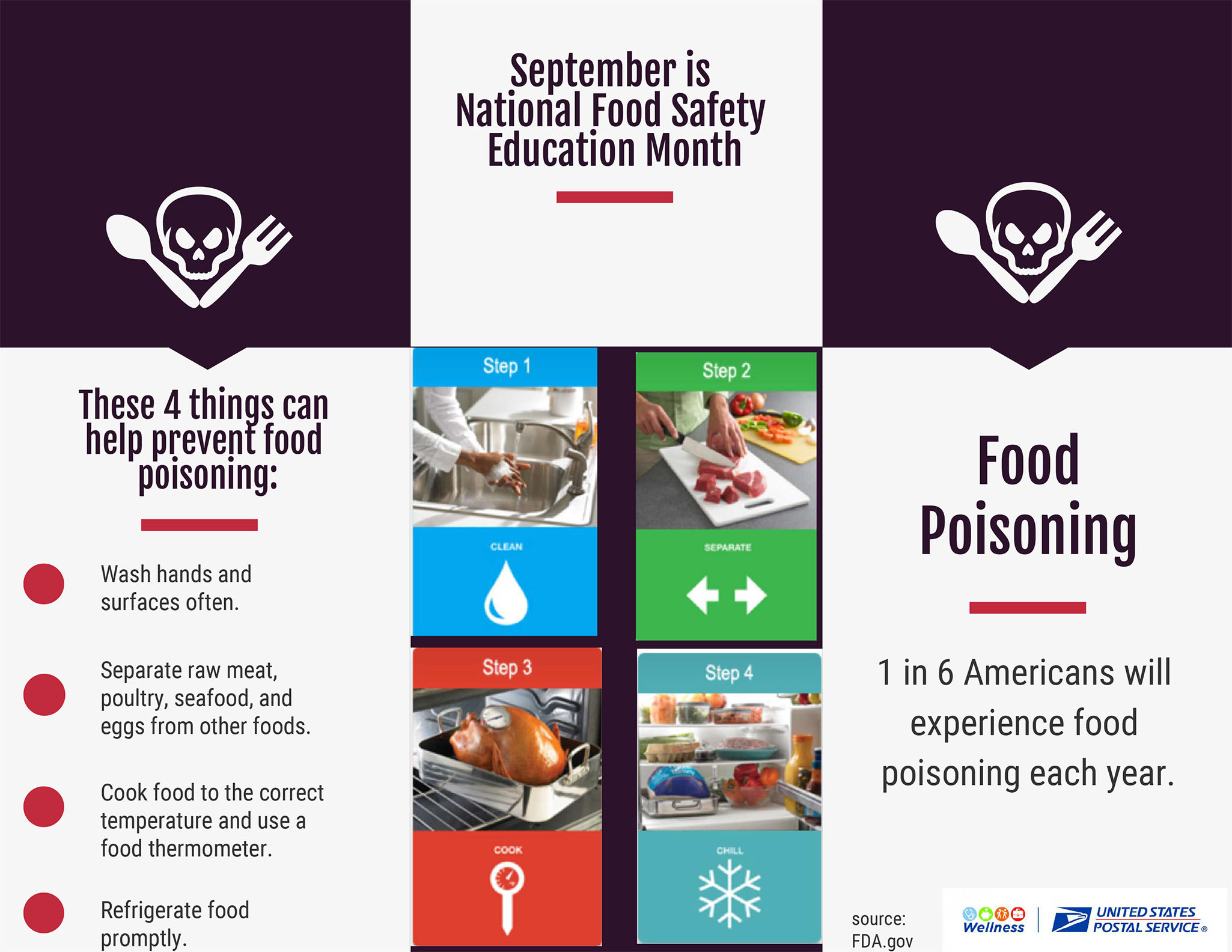September is National Food Safety Education Month. According to the Food and Drug Administration, about 1 in 6 Americans get sick with foodborne illness (or food poisoning) each year.1
You can get sick from food poisoning after ingesting certain bacteria, like Salmonella. Food poisoning can be mild or serious — symptoms vary depending on what type of bacteria is causing your illness and may last for a few hours or up to several days.
The most common symptoms of food poisoning are diarrhea, stomach pain or cramps, nausea, vomiting, and fever. People 65 and older, children younger than 5, pregnant women, and people with a weakened immune system have a higher risk of getting sick and contracting severe illness from food poisoning.
To prevent food poisoning when eating at restaurants, order food that is properly cooked, avoid lukewarm food, and refrigerate leftovers quickly as harmful bacteria multiply very fast on food.
When preparing food at home, remember to wash your hands, food utensils, and surfaces often. Rinse fresh fruits and vegetables under running water and always separate raw meat and poultry, seafood, and eggs from other foods. Cook food to the minimum safe internal temperature to destroy harmful bacteria. Using a food thermometer is the only way to ensure the safety of meat, poultry, seafood, and eggs.
If you think you have food poisoning, contact your healthcare provider right away. For more information about protecting yourself and your family from foodborne illness, visit fda.gov.
— Compensation and Benefits,
Human Resources, 9-21-23
